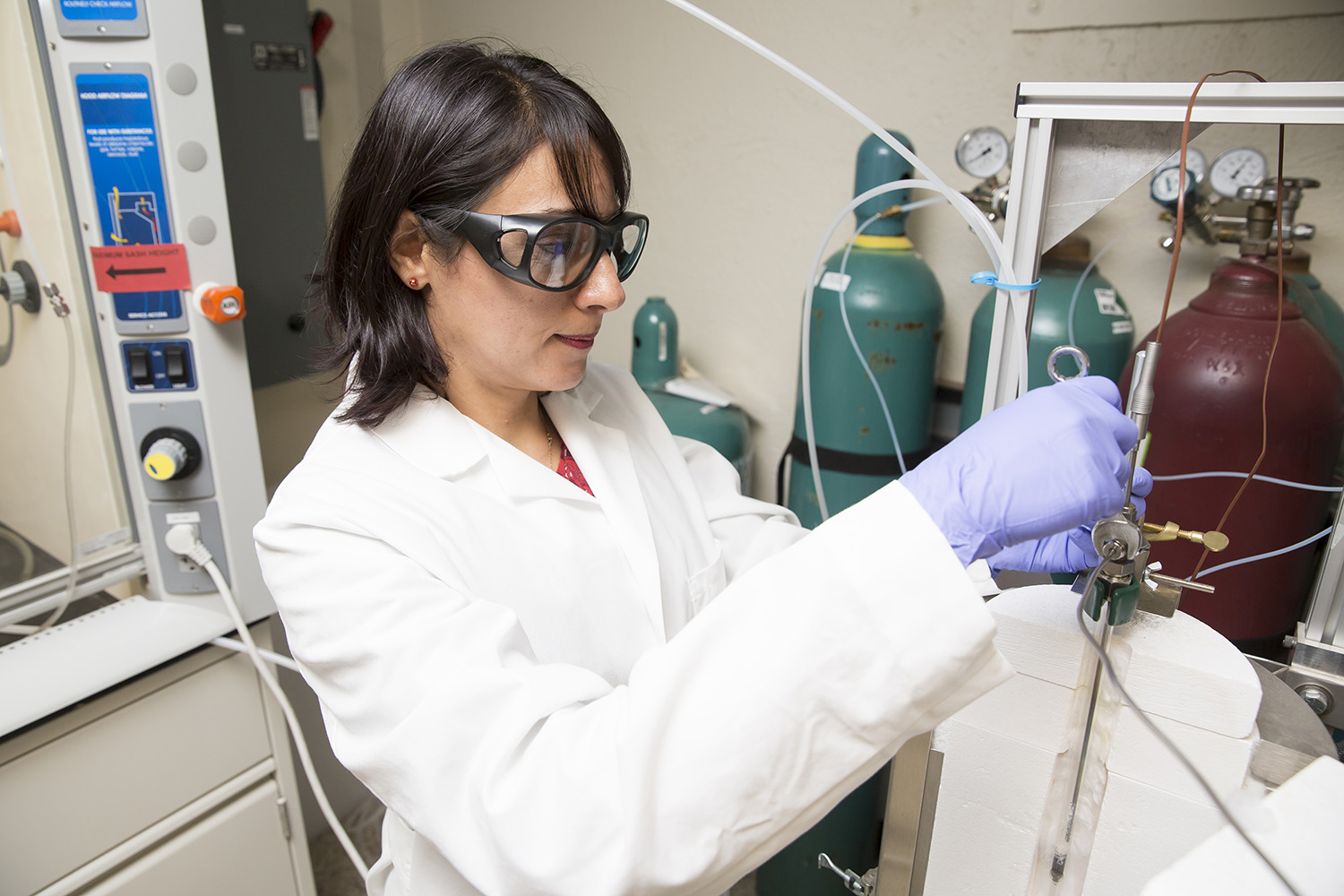Professor to Use Catalysis to Convert Greenhouse Gas Into Two Chemical Commodities
By: Amanda Bowman
Making a simple addition to certain things can be a, well, plus. Adding a pinch of salt to a dessert can brighten and enhance the sweetness of chocolate, while adding a drop of blue into red creates a beautiful shade of purple. This seemingly simple process of addition also may help produce an answer on how to reduce the current waste of methane gas.
Texas Tech University's Sheima Khatib, an assistant professor in the Department of Chemical Engineering housed within the Edward E. Whitacre Jr. College of Engineering, received a $450,000 grant from the U.S. Department of Energy to pursue her work
with catalysis, the acceleration of a chemical reaction by adding a catalyst, or substance
that increases the rate of a chemical reaction without itself being consumed.
"Catalysts make a reaction happen faster by decreasing the energy required for the reaction to happen," Khatib said. "In industry, a significant percentage of chemical processes are catalytic. Therefore, catalysts have a substantial impact on energy use in industrial chemical processes and on the global economy."
Khatib's project will help develop a process to transform methane gas into other, added-value products.
"Methane is a simple molecule that can be used as a building block for creating bigger molecules that can then be used in the manufacturing of chemicals, and it happens to be the main constituent of natural gas," she said. "Building pipelines to transport a gaseous phase is very expensive and not economically viable. As we discover more stranded natural gas sources, we end up with large quantities of gas that cannot be transported or deployed, so it's flared. The reason natural gas is flared before being set loose into the atmosphere is that methane is a more potent greenhouse gas than carbon dioxide, so it is better to burn it into carbon dioxide and water.
"In our project, we are investigating a reaction that can convert methane directly into benzene and hydrogen, both of which are chemical commodities, without requiring any other reagent. All we need is methane, a catalyst and some heat. Here, we have a process that happens in one step and converts something we can't use into two added-value products. At the same time, it presents the potential to be carried out at the natural gas wellhead, skipping high gas transportation costs."
The catalyst used by Khatib and her team for this project is zeolite-based.
"We support a metal oxide, specifically molybdenum oxide, on a zeolite structure," she said. "We need the molybdenum to activate the methane, but the zeolite also plays an important role in the reaction. Zeolites are silicone, aluminum and oxygen atoms bonded in a way that grows in a crystalline, 3D structure that contains pores and channels, which can have different sizes and go in different directions. What makes this catalyst convert methane to benzene is that we use molybdenum that is in the pores of a zeolite with a channel diameter similar to the diameter of the benzene molecule."
Benzene is a feedstock used in the manufacturing of industrial chemicals, such as
plastics, synthetic fibers, pharmaceuticals, lubricants, detergents and pesticides,
Khatib said.
"A lot of hydrogen is also produced as a side product, but it is a valuable one since it is also a widely used feedstock in industry for the production of chemicals," Khatib said. "More interestingly, it is used as an energy carrier as we try to move towards a hydrogen economy."
Khatib said the support she's received from the faculty at Texas Tech as she conducts her research has helped her immensely.
"I feel very fortunate to work in a great department with very supportive faculty," she said. "I count on great mentors who I can talk to not only about how to pursue my current research, but also how to expand and apply my skills to other related topics of research.
"I also have had the opportunity to be inspired by faculty from other departments on campus by participating in programs organized by the Teaching, Learning, & Professional Development Center. Although those programs are more geared towards teaching and education research, one ends up interacting and learning research philosophies from other amazing Texas Tech faculty working in completely different areas. I find this incredibly refreshing. It also helps me come up with innovative perspectives on my own topics of research at times, not to mention the opportunity for additional mentorship from some of the best professors on campus."
Discoveries
-
Address
Texas Tech University, 2500 Broadway, Box 41075 Lubbock, TX 79409 -
Phone
806.742.3905 -
Email
vpr.communications@ttu.edu
